The false puffball (Reticularia lycoperdon) looks like someone smooshed a marshmallow against a tree, and then it got melted by the sun. It’s bizarre! This white globby growth is not actually a fungus, though; it is a slime mold. It has a lot of common names that describe its funky, rather gross appearance. One of the most whimsical is “caca de luna,” or “moon’s excrement,” coined by the locals in the Mexican state of Veracruz. Though “excrement” is the nice translation!
This website usually only covers fungi species, but this slime mold is often confused with fungi species — especially the small puffballs which they get their common name from. And actually, all slime molds were once mistakenly thought to be fungi. The separation of slime molds from fungi is a relatively recent development.
- Scientific Name: Reticularia lycoperdon, Enteridium lycoperdon
- Common Names: Caca de luna (moon excrement or moon poop), lyekakuitlinocotl (wood mucus), cheese mushroom, koahtotoltetl (the egg of wood)
- Habitat: On dead branches
- Edibility: Edible
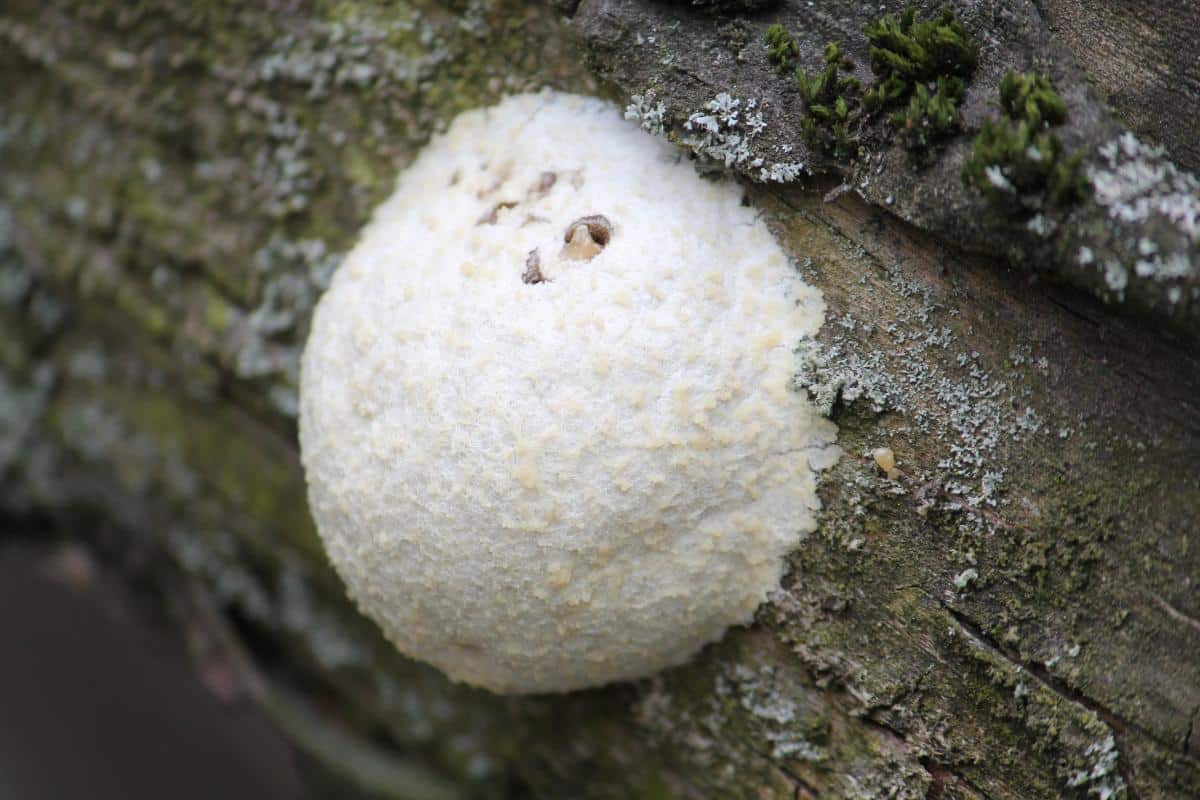
Jump to:
All About The False Puffball
In addition to being called moon’s excrement, the false puffball is also known as “cheese mushroom” and “ocote egg” (ocote is the name for a Mexican pine tree).
Beyond its whimsical names, the false puffball is prized in the culinary traditions of various regions. In the state of Veracruz, the very young bodies of this slime mold are collected, fried, and eaten as a special treat. In San Lorenzo Tlacoyucan, a town nestled in the heart of Milpa Alta, the “cheese mushroom” is a cherished delicacy that has been passed down through generations.
To prepare this traditional dish, the fruiting bodies of the false puffball are carefully picked, mixed with salt and the aromatic leaves of “epazote” (Chenopodium ambrosioides), and wrapped in a small packet. This bundle is then heated in the glowing embers of a campfire or bonfire, allowing the flavors to meld and the texture to transform into a dense, elastic consistency reminiscent of the beloved “Oaxaca” cheese.
The residents of San Lorenzo Tlacoyucan recommend savoring this delicacy on-site, as transporting the cooked fungus can cause it to revert to its gelatinous state, altering its consistency and making it less appealing.
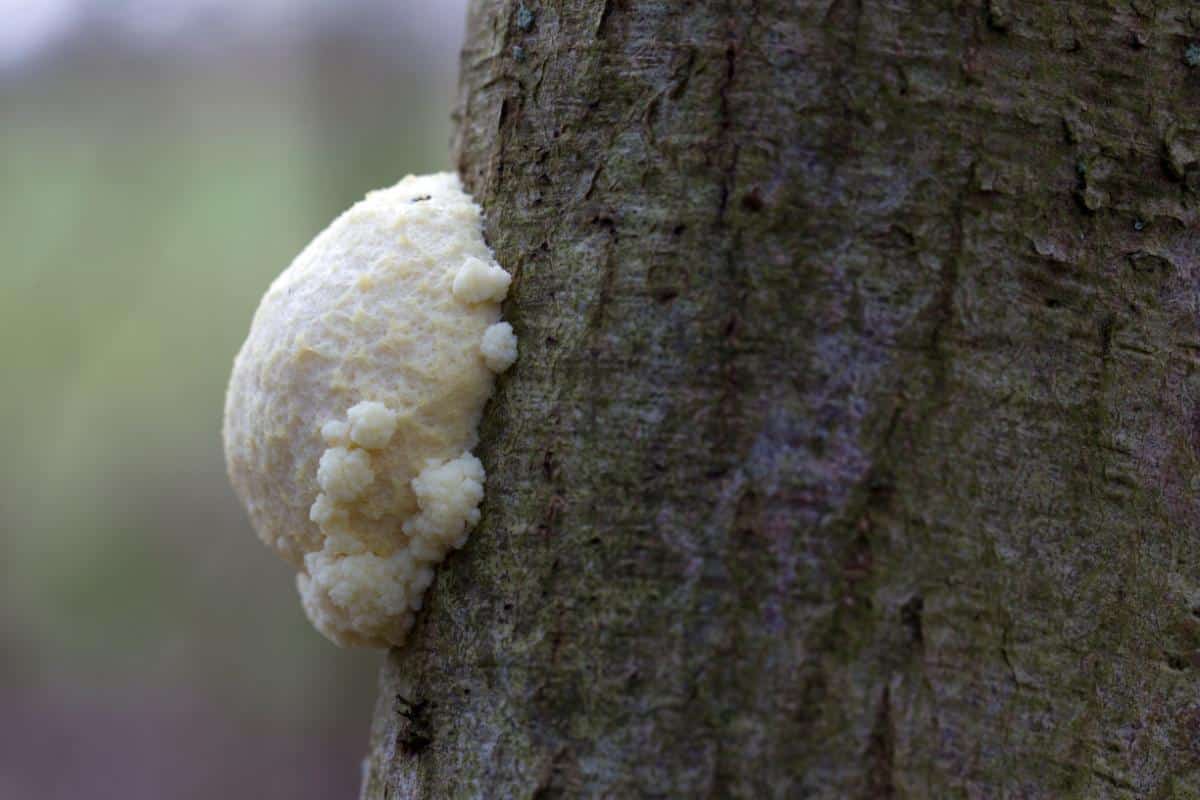
False Puffball Identification Guide
Season
The false puffball typically appears in the spring, after late frosts, and again in the autumn.
Habitat
The false puffball thrives in damp, verdant areas and is often found near rivers, streams, and wetlands. Its preferred hosts are the dead branches, logs, and stumps of alder trees (Alnus glutinosa). However, it also will colonize the decaying remains of elm, beech, poplar, hawthorn, elder, hornbeam, damson, hazel, and even pine trees.
While it is more common on dead wood, it may also grow on living trees. It always grows from wood, never from the ground. False puffball slime molds fruit individually, with just a singular specimen or a large scattered grouping of specimens.
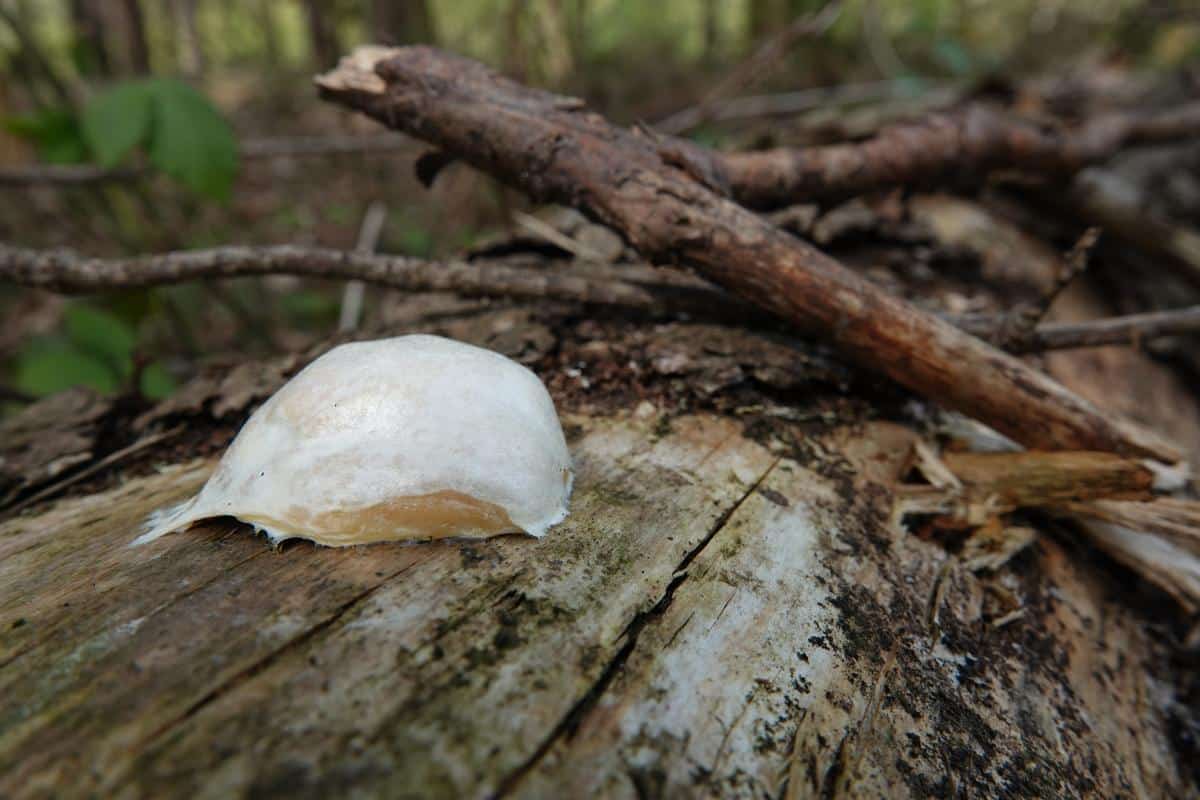
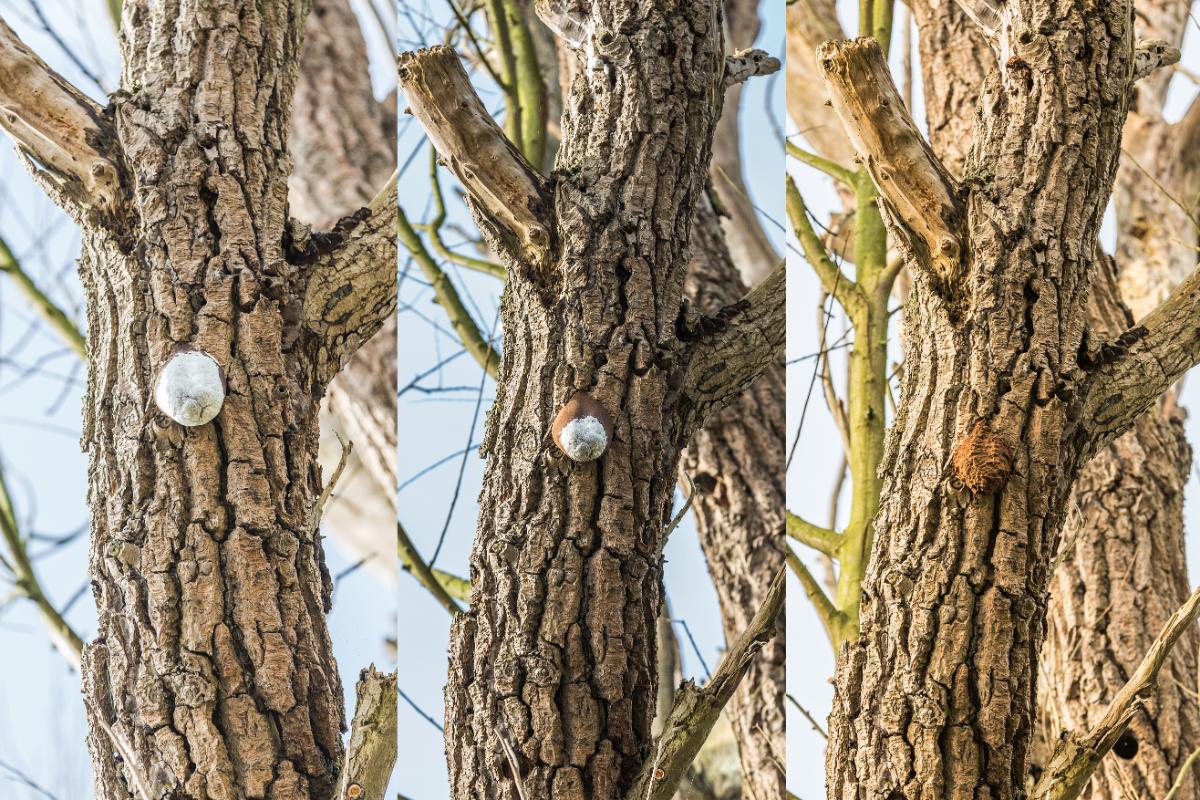
Identification
Cap/Body
The false puffball’s fruiting body is initially highly glutinous, white, and swollen; it resembles a cluster of small white slug eggs clinging to the surface of the wood. Over time, this gelatinous mass transforms, developing a smooth, silvery-white surface that glistens in sunlight. At this point, it looks more pillowy or like a marshmallow.
False puffball slime molds do not have caps, stems, or gills like a mushroom.
As the body matures, it takes on a spherical, elongated, or rounded shape, ranging from 2 to 3.2 inches in size.
Gills (Spore Mass)
As the smooth, silvery surface begins to split and peel away, it reveals a rich, brown spore mass nestled beneath.
Flesh and Staining
The flesh of the false puffball is gelatinous and white. It does not change color when cut.
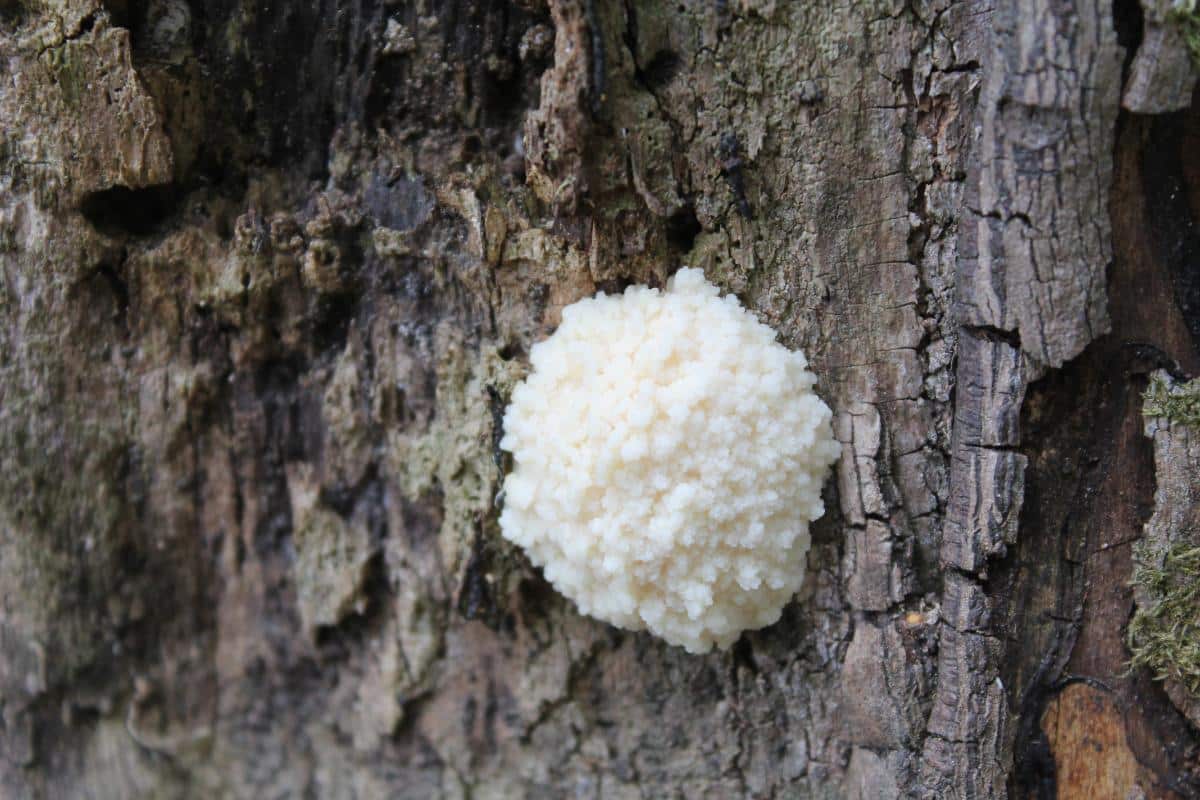


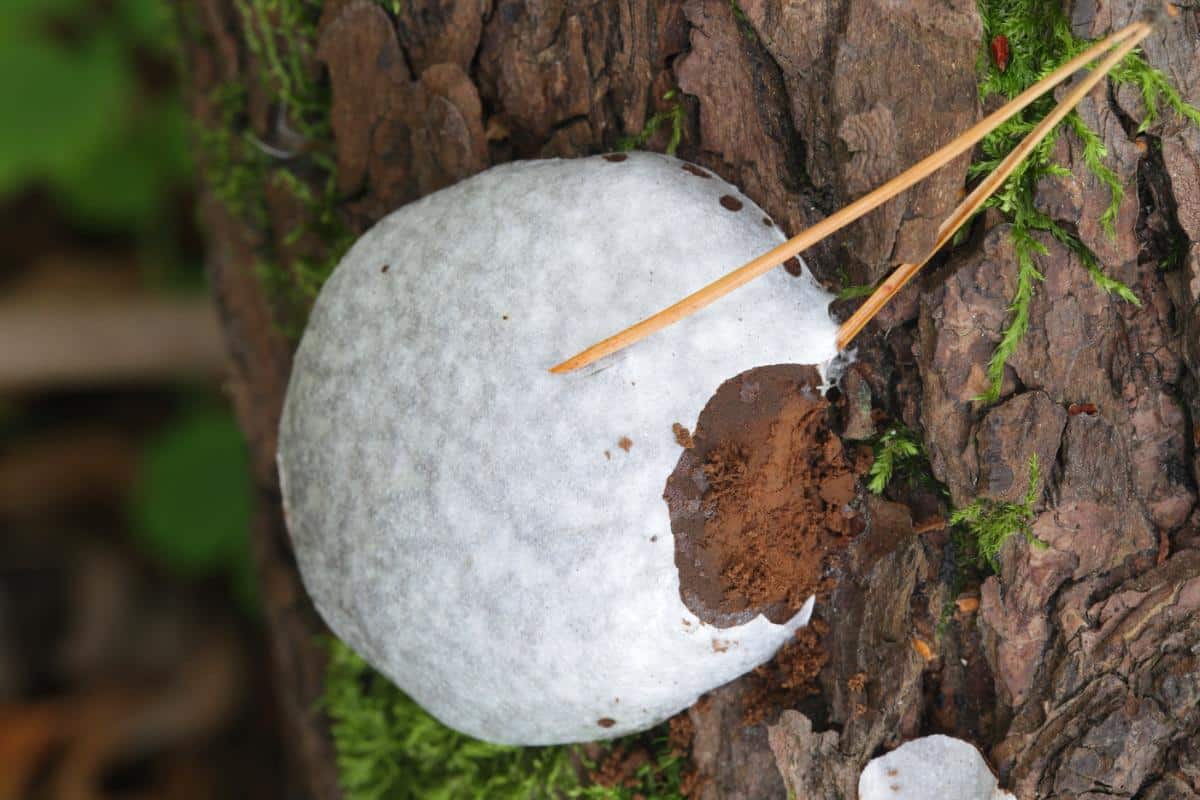
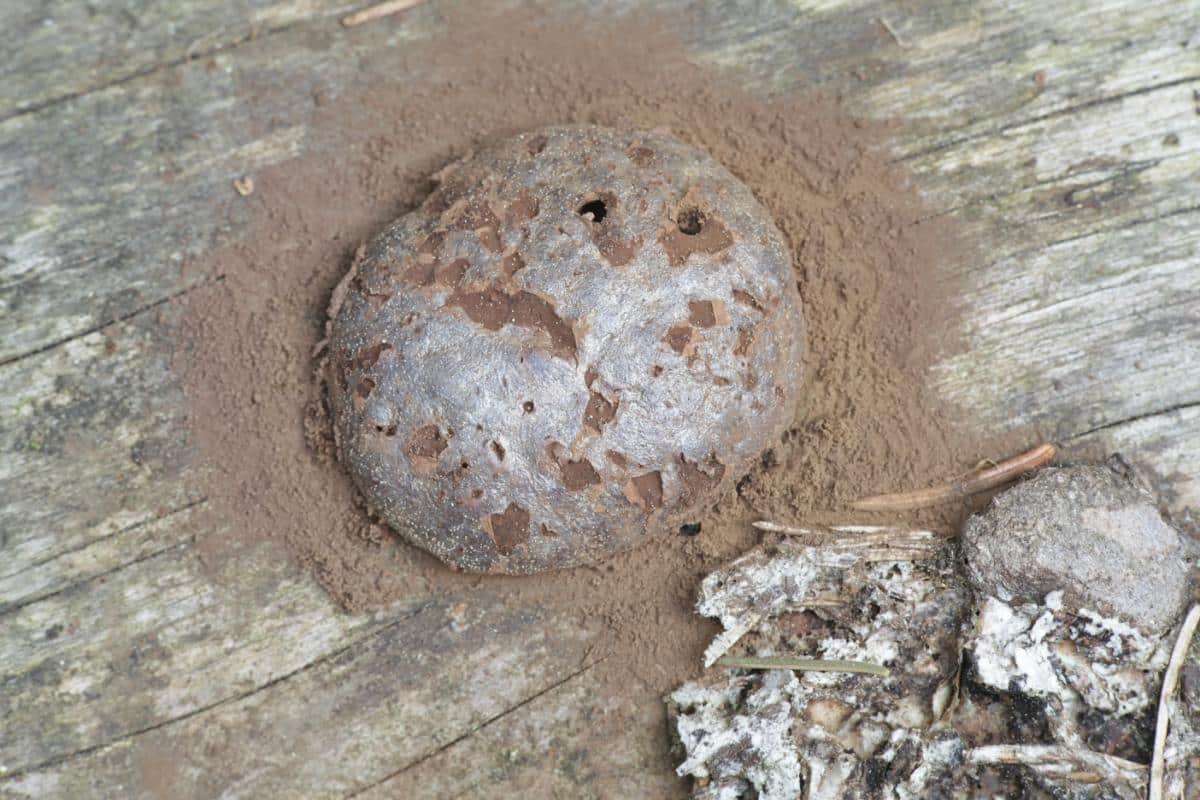
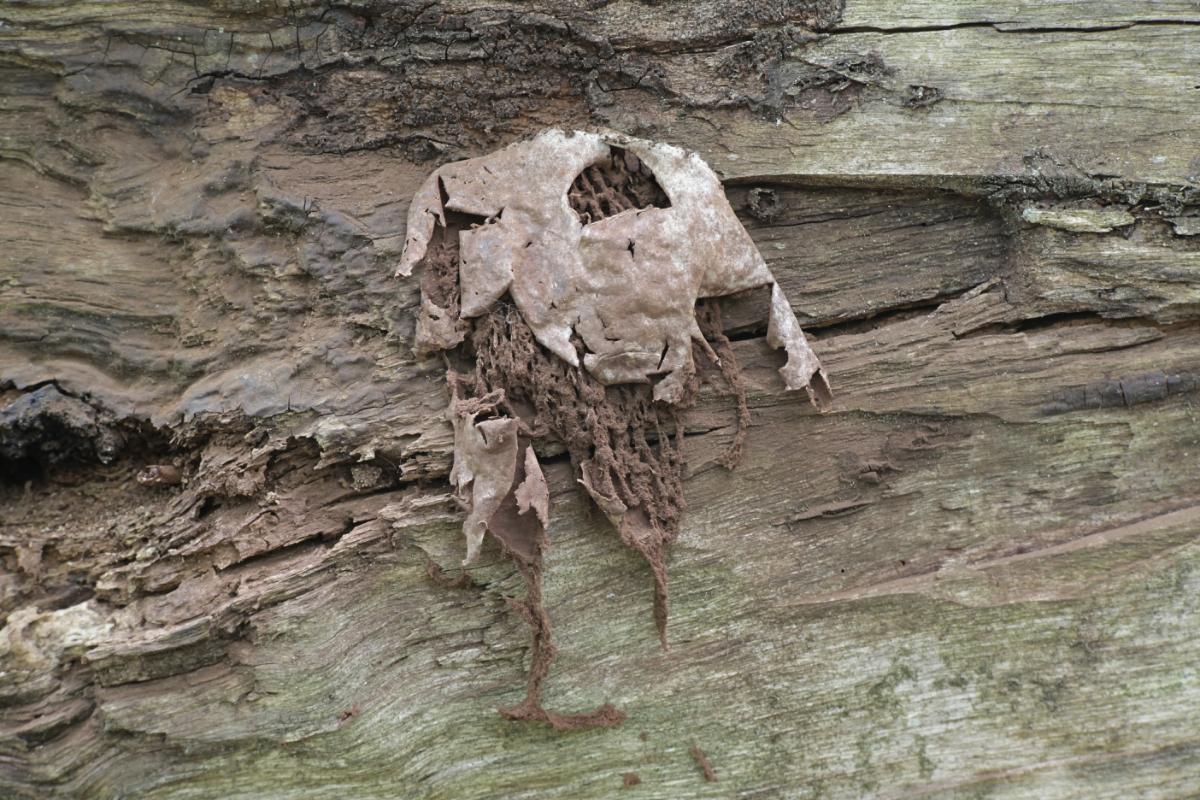
False Puffball Lookalike Species
Tapioca Slime Mold (Brefeldia maxima)
Visually similar to the false puffball, this species is also reported as edible. The primary difference is that it produces black spores in contrast to its counterpart’s rich brown spores. It is also somewhat rare in North America.
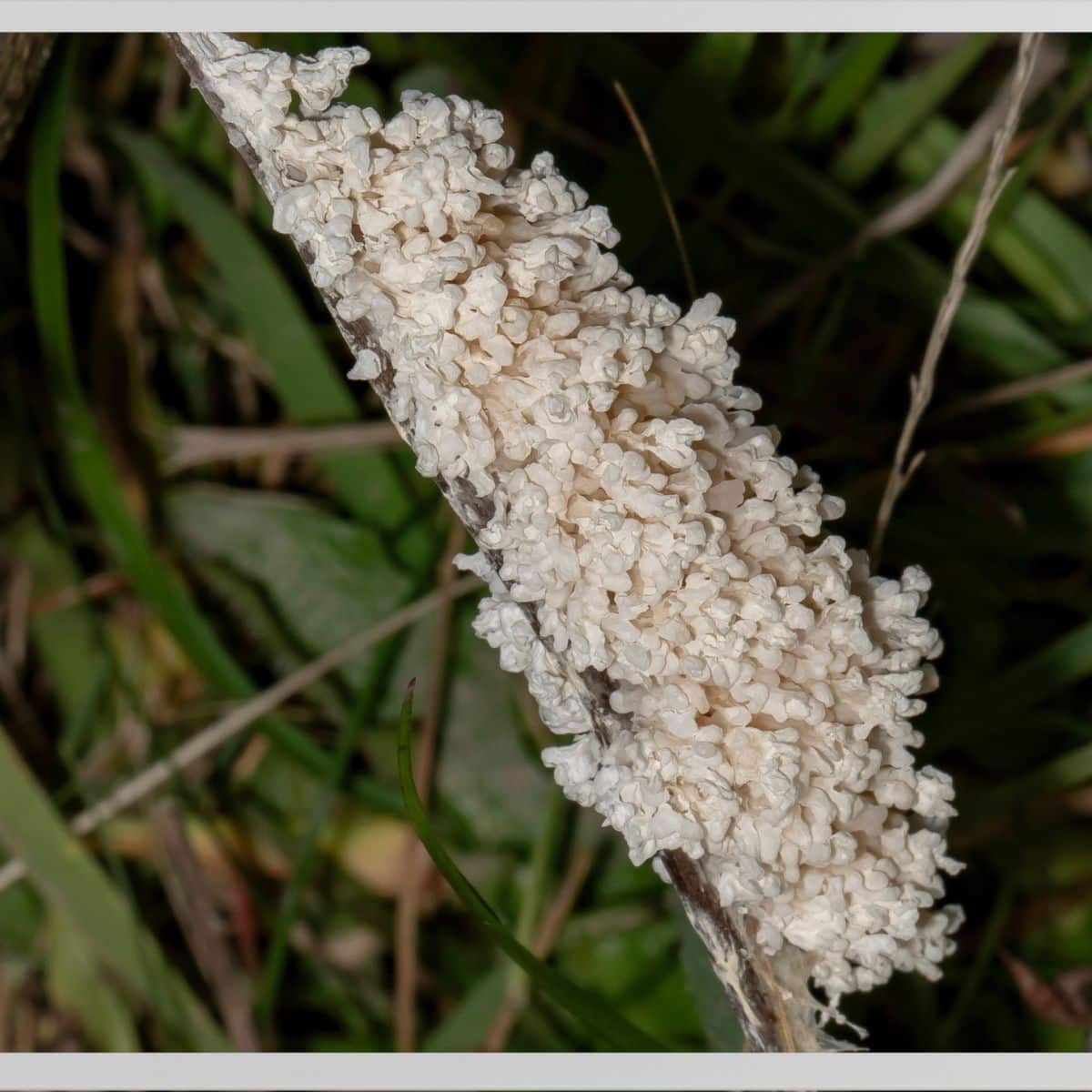
Puffballs
True puffballs, belonging to the genus Calvatia or Lycoperdon, lack the distinct gelatinous structure of the false puffball. Instead, they possess a round or pear-shaped fruiting body with a papery outer layer that eventually ruptures to release the spores. When cut open, a puffball is dry and airy and looks like the inside of a marshmallow.
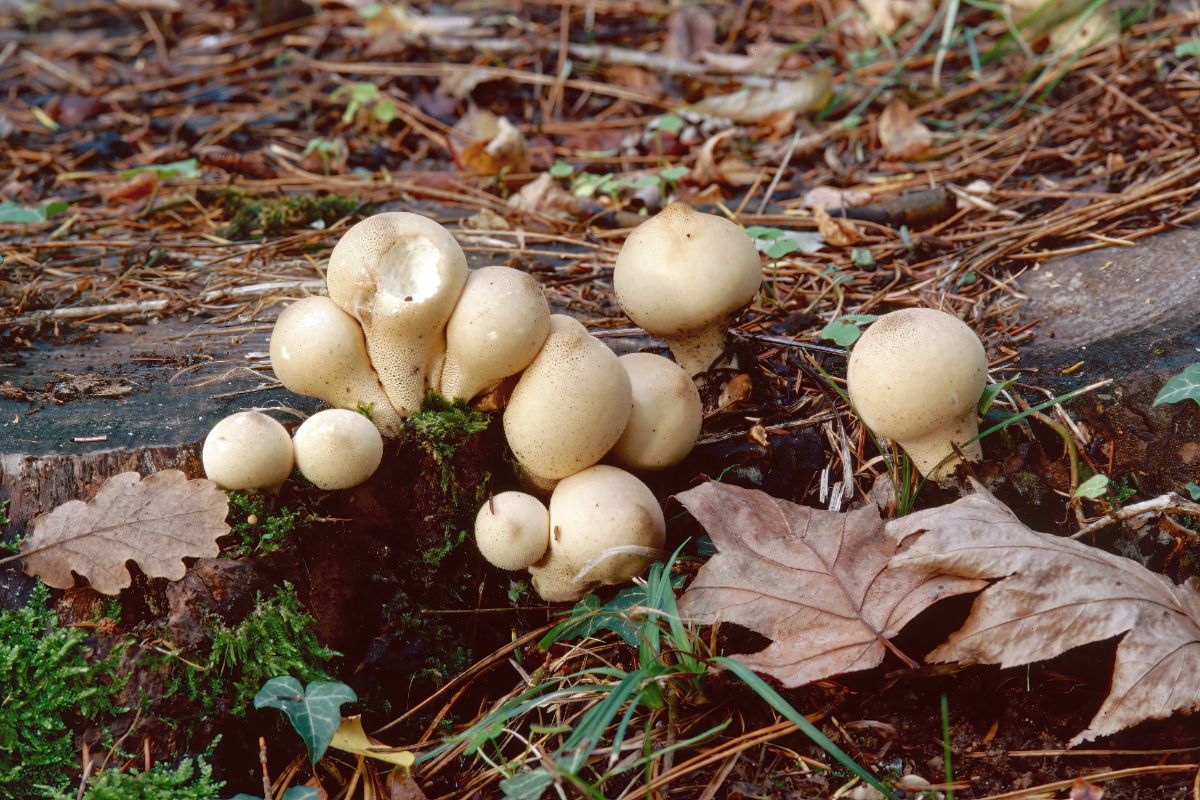
Stinkhorns
The stinkhorn fungi may initially resemble the false puffball in their egg-like stage. However, they develop a distinctive, foul-smelling stem and cap as they mature, making them easily distinguishable.
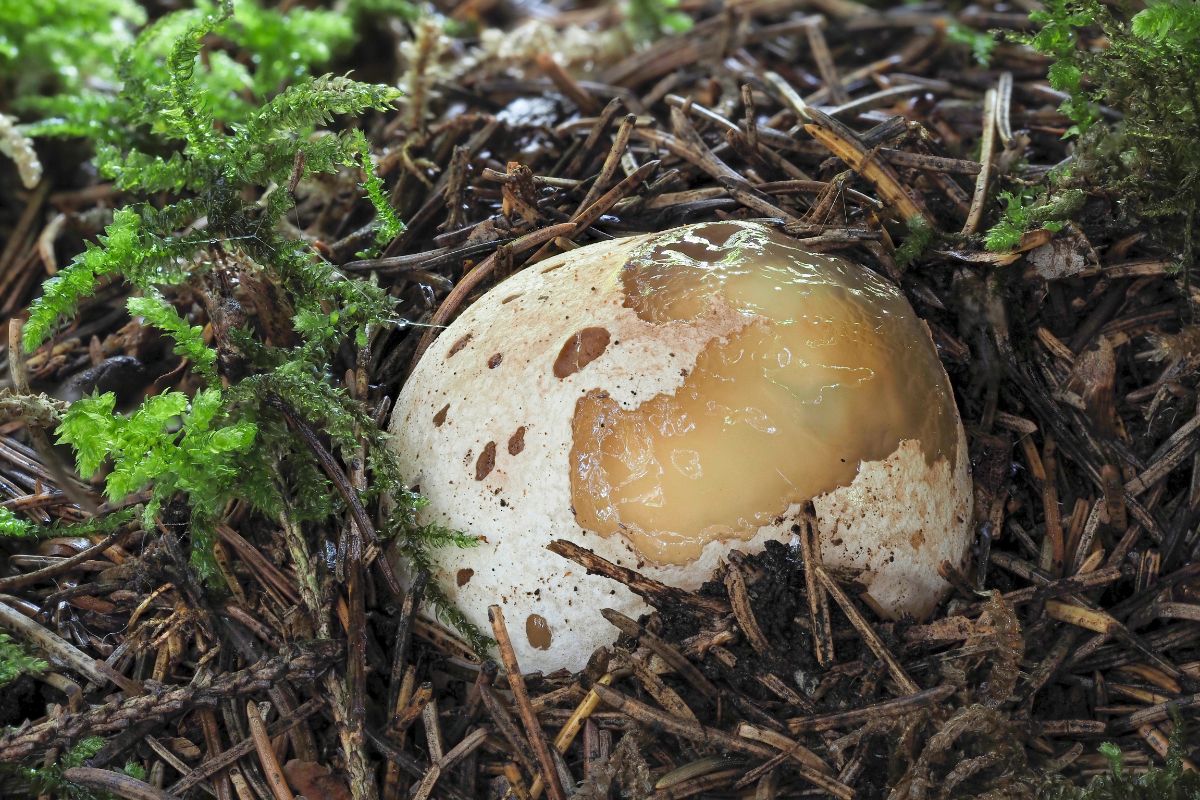
Cooking With The False Puffball
The culinary versatility of the false puffball is a real testament to the resourcefulness of the communities that have decided to eat it. It is not widely consumed wherever it grows, but in some traditional communities it is prized.
This slime mold is gelatinous, with a very soft consistency. Some have likened its texture to jelly or even animal brains. But its flavor is extremely special and unique. It tastes mildly like almonds.
In the town of Cheran, in the heart of Michoacán, the locals prepare a broth featuring this fungal delicacy. The cooked false puffball is simmered in boiling water, creating a rich, flavorful broth that is then enhanced with the addition of fresh mint and spicy green chiles. The resulting concoction is a fusion of flavors, with the false puffball’s unique texture resembling a soft, jelly-like consistency.
In the community of Canoa, located in the state of Puebla, the false puffball is affectionately known as “koahtotoltetl,” a name that translates to “the egg of wood (dead logs).” Here, the fruiting bodies are carefully scraped from their woody hosts and combined with the aromatic leaves of “epazote” (Chenopodium ambrosioides). This mixture is then wrapped in a corn husk, similar to a traditional Mexican “tamal,” and baked in the embers of a campfire or oven. Once cooked, the false puffball takes on a dough-like consistency.
For a great discussion on the edibility of this mushroom, the possibility of a feedback loop on edibility, and a discussion of the main source I used for this information (Herald Open Access: The Edibility of Reticularia lycoperdon), check out this super detailed investigation on StackExchange.
False Puffball Insect Associations
A specialized slime mold fly, Epicypta testata, lays its eggs within the spore mass of the fruiting body. The fly’s larvae then hatch and feed on the plasmodial phase, eventually pupating and emerging as adults, carrying and dispersing some of the spores that have stuck to them.
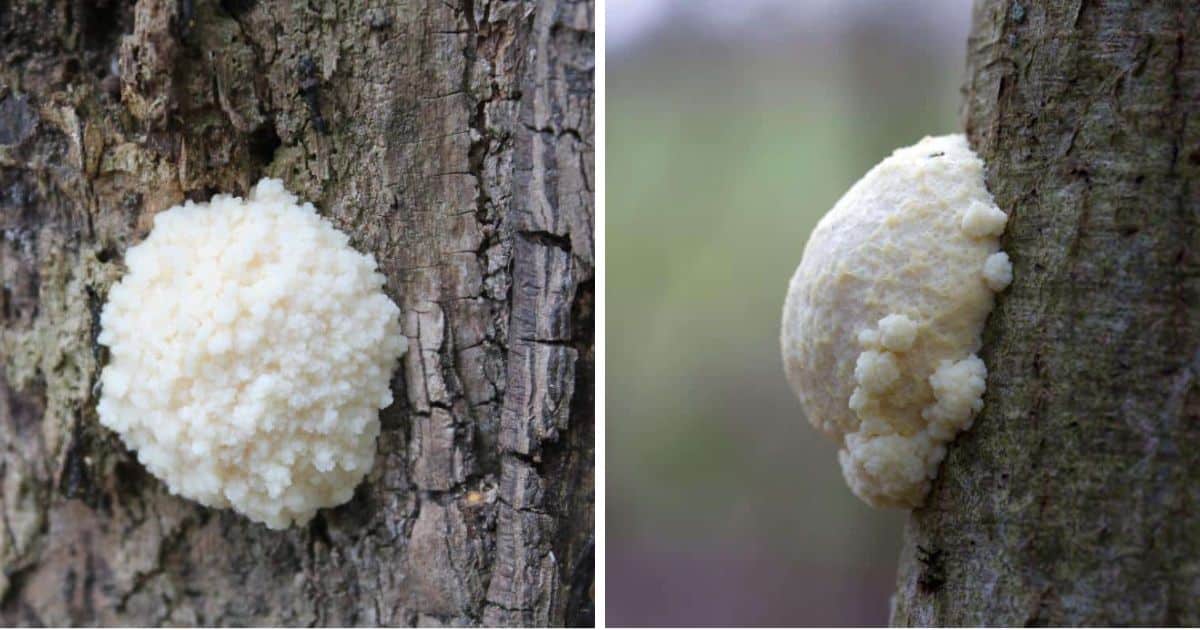
Common Questions About False Puffball Slime Molds
Are slime molds dangerous?
There are thousands of slime mold species and none are known to be a danger to people or pets.
Can I get rid of slime molds on trees?
If you must, you can use a strong water spray to dislodge the slime mold. However, this won’t prevent it from occurring again. To prevent it, you’d have to eliminate the spores and remove whatever they’re getting nutrients from (the wood…).
Slime molds will go away on their own in approximately 1-3 weeks.

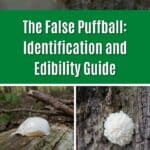
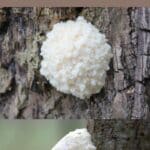
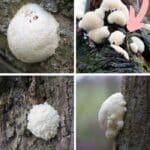
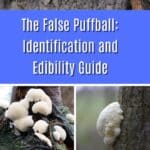

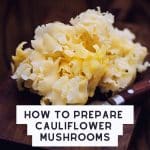
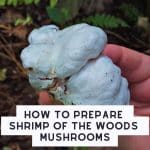
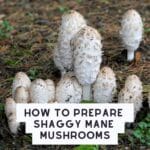
Mal says
I really like your Webpage, the story with this one’s edibility seems complicated and a bit suspicious apparently.
https://skeptics.stackexchange.com/questions/50672/is-slime-mold-eaten-in-mexico-as-a-dish-called-feces-of-the-moon
If you have eaten them I would be curious to know what recipe you used and how it went?
Nobody seems to have a recipe other than a description of cooking them on a fire packed in mexican tea-tree leaves, but then calling this somehow “frying in oil”.
Jenny says
When I was writing the article, I searched for details about how it was cooked but didn’t get very far — thanks for that link! I’m going to include it in the article because it is an excellent discussion of the articles available and the possibility of a feedback loop. I’ve never eaten it — I’ve never even found it, actually. But I hope I get a chance someday. I’d try a bite though the description of the soft sliminess turns my stomach lol
Chris Folsom says
This grows pretty readily on the Ponderosa where I live in Wyoming and is eaten pretty commonly. It’s hard to transport because it’s just a small gelatinous mass, so this is the first I’ve learned that some people might transport it and add other ingredients. I’ve only ever just eaten it right off the tree, but it’s pretty tasty — lightly cucumbery with a slight woody aftertaste.
Jenny says
Thanks for the sharing! It is interesting to hear how it tastes raw
Irma Minnaar says
We live right next to a nature reserve on the western Witwatersrand (Johannesburg South Africa) and today found one of these on a dried tree stump which has been used as a chopping block for several years. This has been an exceptionally wet summer with the rain extending well into autumn and this is the first time I have seen anything similar.
Thank you for the information.